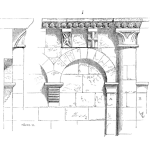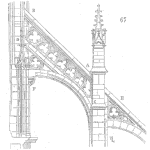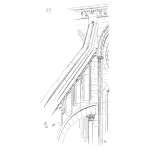
Supply Management and Context
Abstract
Greg and Fred discuss why today’s business model is often based on managing an organization’s brand and outsourcing design, reliability, and quality.
ᐅ Play Episode
Your Reliability Engineering Professional Development Site
by Greg Hutchins Leave a Comment

Greg and Fred discuss why today’s business model is often based on managing an organization’s brand and outsourcing design, reliability, and quality.
ᐅ Play Episode
by Wim Vancauwenberghe 1 Comment

A significant challenge addressed is managing water losses across a vast network of over 34,000 kilometers of main pipes. Through strategic data use and digital technology implementation, such as sensors and digital customer meters, leakages are detected and managed more efficiently. The episode also highlights the importance of engaging the workforce in the transformation process and emphasizes the significance of data reliability, effective communication, and storytelling in driving organizational change within the water sector.e
by Mike Sondalini Leave a Comment

It’s easy to lose your way in maintenance, reliability and enterprise asset management. Without a vision you are aimless. Without a map you are lost. To get maintenance, reliability and enterprise asset management success you must have both the right vision and the correct path to it.
by Greg Hutchins Leave a Comment

The Agile Manifesto, also called the Manifesto for Agile Software Development, is a formal proclamation of four key values and 12 principles to guide an iterative and people-centric approach to software development.
[Read more…]by James Reyes-Picknell Leave a Comment

To get different results of any kind, we need to make changes. As human beings we are very good at change, but not so good at “being changed”. If we want it, it will happen. If we don’t want it, we will resist.
Physical asset performance is a result of having a robust and reliable design to begin with, the right maintenance executed the right way, and operation within the assets’ performance limits. In an existing operation, the design is fixed already. Maintenance and operations however, are not, and can often be improved, usually with considerable effort. That effort however, can be well worth it.
[Read more…]by Karl Burnett Leave a Comment

By the 1906 revision of the Regulations, there were many more technical changes to manage. Most ships now had iron or steel hulls, which changed the mechanism of how a hull would fail. Galvanic corrosion and methods to prevent it were well understood. The chapter covering “Preservation, Repairs, and Docking” required zincs, the sacrificial anodes to be placed near the screws to prevent galvanic corrosion.
[Read more…]by Mike Sondalini Leave a Comment

Maintenance Work Backlog Management: a Start in Managing Maintenance! A maintenance manager can commence a maintenance improvement programme by simply creating opportunities for individuals and groups to make high performance contributions. One way to do this is to manage the Maintenance Backlog.
[Read more…]by Karl Burnett Leave a Comment

In 1861, Royal Navy regulations updated the Captain’s responsibilities. Centralized management control of the technical system continued to grow. Regulations now prevented Captains from modifying the ship. Many new standard report forms were required to be routed to superior offices in the bureaucracy.
Many rules from the 1717 and 1731 regulations were kept, for example: managing ship surveys, tracking repair costs, written communications with the dockyard about defects and their status, and periodic caulking.
[Read more…]Communicating with FINESSE and JD Solomon Inc. are jointly focusing on asset management in early 2024. The articles include how to facilitate asset management plans, ways that asset management plans fail, how organizational context impacts implementation, and how to communicate asset management to senior management. These powerful articles will improve your asset management success!
Facilitation is a structured session(s) in which the meeting leader (the facilitator) guides the participants through a series of predefined steps to arrive at a result that is created, understood, and accepted by all participants. Not all asset managers are great facilitators.
These are my Top 5 tips for facilitating asset management plans:
5. Get the Right People Involved
4. Don’t Overthink the Gap Analysis Tool
3. Create a Charter
2. Establish Organizational Context
[Read more…]
The 2022 Global Risk Report is the 17th risk assessment report. The preface to the report notes: “The 17th edition of the Global Risk Report identifies tensions that will results from diverging trajectories and approaches within and between countries and then examines the risk that could arise from such tensions.” (1)
The results of the survey have substantive implications as the above notes. These implications go beyond diverging trajectories and approaches, to something more fundamental. That is whether the survey has any probative value. This piece discusses the results of the survey. It also examines its probative value.
[Read more…]
Effective communication is the one thing that makes your life better, more fulfilling, and more rewarding. That is equally true in life and your career. Give the soft skills and communication, in particular, the same emphasis that you give your hard skills. Soft skills are the difference makers.
I agree with technical professionals who counter with this observation. We then agree that one of the first things they teach you in any church is how to pray.
Again, I agree with technical professionals who cite this one. Then we agree that every family has a fair number of poor relationships that could be improved if we all communicated more effectively.
[Read more…]by Karl Burnett Leave a Comment

The Royal Navy built its first steam-powered ship, the HMS Comet, in 1822. The first generation of steamships normally had both sails and a steam engine. A ship with both sails and a boiler had a long range and was mobile in close quarters. A boiler reduced the tactical importance of wind direction, and allowed maneuvering in disadvantageous winds or when becalmed. Over the next 40 years, the Royal Navy converted many sailing ships to steam by retrofitting boilers.
The capability came at a cost. A worldwide coal distribution system was required. The ship had to contain a stack, machinery, the boiler itself, and tons of coal. The added weight changed how the ship moved and reduced space for supplies, weapons, and ammunition. Refueling, called coaling, changed operational patterns.
[Read more…]by Greg Hutchins Leave a Comment

This article is the ninth of fourteen parts to our risk management series. The series will be taking a look at the risk management guidelines under the ISO 31000 Standard to help you better understand them and how they relate to your own risk management activities. In doing so, we’ll be walking through the core aspects of the Standard and giving you practical guidance on how to implement it.
by Mike Sondalini Leave a Comment

A business management system needs a quality management system built to make customers happy.
Every company already has a business management system they use to deliver products or services. If you want to be a more profitable business, you need to continually create a better management system.
—
It took a long time to understand why a business in the same market did better than other businesses. Every one thought it was due to better marketing, or access to more capital. But it was not. It was simply that one business had products that better suited customer needs. The best product always gains most market share and makes the biggest profits. Which is why a business management system needs a quality management system that improves their products.
by Greg Hutchins Leave a Comment

This article is the eighth of fourteen parts to our risk management series. The series will be taking a look at the risk management guidelines under the ISO 31000 Standard to help you better understand them and how they relate to your own risk management activities. In doing so, we’ll be walking through the core aspects of the Standard and giving you practical guidance on how to implement it.
In previous articles we’ve looked at the core elements of the risk management framework, as well as the role of leadership and commitment, integration, design, implementation, evaluation and improvement more specifically. In this article, we’ll be moving away from the framework and instead introducing you to the risk management process.
 Ask a question or send along a comment.
Please login to view and use the contact form.
Ask a question or send along a comment.
Please login to view and use the contact form.